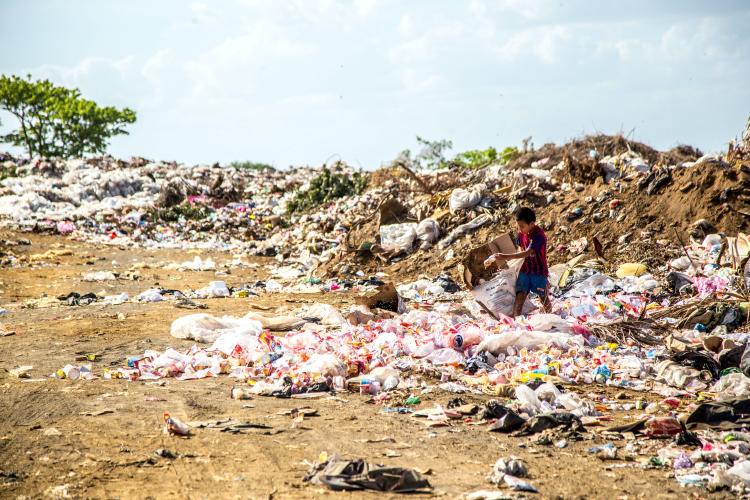
To be honest, generally what we know about fashion is what is better named fast fashion. For years fashion magazines, designers and even fashion schools have repeated that fashion is always near to death and old. Let's dive into: Fast Fashion: Why Should Be The Start Of Fashion Change?
“Fashion is a form of ugliness so intolerable that we have to alter it every six months.” That's a well known quotation from Oscar Wilde that led us to think that is true. Or, at least, that is the only truth related to fashion.
The fashion system in its traditional design, is thought to bring novelty every six month. This answer to the fact that every six month the season may change and with that climate conditions and atmospheric temperatures also change. Answering to that primary cause, the fashion industry made out of obsolescence a real business and it named it fast fashion.

The modus operandi of the fashion industry since the beginnings of the 19th century was to produce clothes at low cost. In other words, to get trends into stores as quickly as possible. However, it was not until the technological revolution that the concept of fast fashion became more firmly established.
During the second half of the 20th century, retail began to position itself with the arrival of brands such as Topshop, Zara and Forever21, which crowned fast fashion. With them, the sizes of clothes as we know them now, appeared in the 60 decade. The purpose was to make commercialization easier and standardize tailoring. Before that the 90% of the clothing was tailor-made.Then, with globalization and technology, advertising became more widespread, consumption multiplied, and this brought with it shorter production and delivery times, and an inordinate amount of clothing made with very cheap labor, at the expense of the safety and welfare of the workers who make the garments.
Now-a-days fast fashion consists of an established system. Brands like Zara from Inditex group and the swedish H&M have built their success on a business model that consists of novelty every week. This led to the existence of more than 50 product launches every year for each of these brands. In terms of design, trending topics are reflected in the new releases, something that makes fashion items desirable in a more fluid way.
Due to the fact fast fashion is based on recurrent consumption and impulse buying, which instills a sense of urgency in purchasing, apparel brands are producing twice as many collections compared to those made in 2000. The overall increase in production demand is estimated to be 2% per year.
Fashion has a strong emotional component in terms of consumption. If we consider the question “why are you buying fashion?”, probably you may find that the answer is related to a desire more than to a need. And fast fashion knows these perfectly. A colour that brings us calm in a stormy context or even a print that makes us laugh or feel beautiful can cause a new purchase. But, will these items remain in force for a considerable period of time? Obsolescence becomes the thing.
If we think about planned obsolescence in fashion we would say that it is a borrowing that fashion has made from the electric industry. An exact starting point for planned obsolescence is on December 23, 1924, when the world's leading light bulb manufacturers, including companies such as Osram, Phillips and General Electric, met in Geneva. There they signed a document in which they undertook to limit the service life of their products to 1,000 hours instead of the 2,500 they had previously achieved. A motive, of course, was to achieve greater economic benefits. The first global pact to intentionally set an expiration date for consumer goods was born.
The largest volume of fast fashion production takes place in Asia. This arose in the 1960s and 1970s with the first and second textile migration. Large firms from the most industrialized countries such as Japan, USA and Europe begin to produce in countries such as Hong Kong, Taiwan and South Korea in the first textile migration and in China, Malaysia, Philippines, Thailand and Vietnam in the second textile migration, due to the low cost of human labor there.
This situation extends to the present day. As a consequence of consumer demands for more knowledge of the traceability of what they consume and because of very unfortunate events such as the Rana Plaza textile factory collapse, this information is now commonly known, considered and questioned. It is especially considered the manufacturing conditions in those countries taking place today and everyday.
True Cost is a documentary you should watch if social impact in the fashion world interests you. The film is a fact-based critique of the capitalist system and the consumerist way of the 21st century, which is reflected in Fast fashion. Take a look on this film:
Garment workers, mainly women, in Bangladesh are paid approximately US$96 per month. The Bangladesh wage board noted that for a garment worker to live a decent life in Bangladesh, with basic amenities, he or she needs to earn three and a half times that amount.
According to the non-profit organization Remake, 75 million people in the world work making the clothes we wear, and 80 percent of the clothes we wear are made by women between the ages of 18 and 24. Yet the top management positions in fashion companies are held by men.
The textile and fashion industry is known to be one of the main water users and polluters. Producing a cotton shirt alone consumes 2,700 liters of water during its manufacture, enough to cover the hydration needs of a person for two and a half years. Water pollution is also one of the biggest fast fashion environmental impacts and covers all stages of the value chain.
Generally, fast fashion brands and consumers don't consider the impact of using, care and end of usel of clothes in its impact on water pollution. This is despite the fact that the production, use and disposal of textiles contribute to the release of micro or nanofibers. The washing of synthetic textiles is one of the main sources of microplastics in the aquatic environment and accounts for 35% of all microplastics released worldwide. These substances have been shown to damage aquatic ecosystems and even accumulate in human body tissues. Fast fashion environmental impact in terms of microplastics is a silent but dangerous damage to the planet.
If you want to learn more about what Water Footprint is you can read this article: Water Footprint: How Much Water it Takes to Make Things
Textile waste has multiple aspects of analysis. The fashion and textile industry generates textile waste in a wide range of spots of the chain of value:
What's more, textile waste is hard to recycle. Many projects around the world are looking forward to a solution in terms of textile material re-process. Big brands have made an approach to recycled textiles, but raw material is always needed then, the solution is partial.

Fast fashion environmental impacts are also important in terms of CO2. Just to illustrate this, making a pair of jeans produces the same greenhouse gas emissions as driving a car for approximately 128 kilometers.
The high carbon footprint of the textile industry is due to the high energy use and the energy sources it employs. For example, textile manufacturing in China relies on coal and, for that reason, has a 40% higher carbon footprint than textiles manufactured in Turkey or Europe.
You can learn more about what Carbon Footprint is in this article: Carbon Footprint: What This Is and What We Can Do about It
The production method also influences energy use. In the case of conventional cotton cultivation, according to the researchers, this can emit 3.5 times more carbon dioxide than organic cotton cultivation.
Since natural fibers have a lower carbon footprint than synthetic fibers, the best way to decrease the carbon emissions associated with fiber production would be to substitute the use of polyester with natural fibers. In addition, plant-based fibers sequester atmospheric carbon and act as a sink. For example, one ton of dry jute sequesters 2.4 tons of carbon. Flax and hemp production also have low carbon emissions.
However the experts say that, far from “the solution for fast fashion”, the lower carbon footprint of natural fibers during production can be offset during the use phase due to the higher energy requirements for washing, drying and ironing compared to synthetics.
According to a report led by the UN the average consumer today buys 60% more clothing than 15 years ago and keeps each item half as long. So is it possible to repair the fashion industry's impact in terms of CO2 on the planet? Knowing our personal impact can mean the beginning.

Slow fashion is more than a trend and a method, it is a way of thinking and conceiving fashion from a conscious, ethical and respectful attitude towards the environment, workers and consumers. Knowing its importance and transcendence as a production model is fundamental for the future of sustainable fashion.
You can learn more about second hand clothing as an alternative to Slow Fashion here: Second-hand clothing: How to find the ideal thrift store near me.
The concept of slow fashion appeared as a reaction to fast-fashion, placing itself on the opposite side of the mass production model that uses resources without measuring the social and environmental impact that each action generates.
Thus, time, resources, inputs and labor become more important through deceleration, making slow fashion a more empathetic and sensitive practice with the environment. The change proposed by slow fashion not only involves designers and brands, which seek to generate changes towards a greener future, but also challenges those who buy these garments.
Let me know what you think about Fas Fashion..
You may be interested at: The New Retail: How to Buy Second-Hand Clothes that Fit my Style